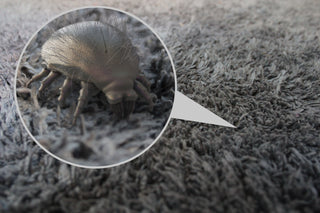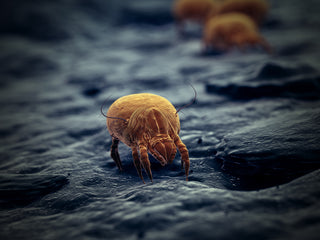Dust mites are microscopic creatures that can be found in nearly every home and business. They thrive in warm, humid conditions and prefer to live where people spend a lot of time, including carpets, bedding, furniture, mattresses, pillows, and curtains. These tiny insect-like (arthropods, really) pests feed on skin flakes that naturally come off our bodies throughout the day as well as pet dander and other debris.
Hiding in Your Mattress
The number of dust mites that can be found in a mattress varies depending on its age, but it can range from 100,000 to 10,000,000. These tiny creatures have a remarkable ability to multiply rapidly, as each female dust mite can lay eggs and increase the population by 25 or 30 new mites per week. To put it into perspective, an average dust mite produces about 1,000 allergenic waste particles during its 80-day lifespan. This means that, in their relatively short lives, an individual dust mite can produce around 200 times its own body weight in allergenic waste. Such proliferation and waste production make it crucial to address dust mite infestations in mattresses promptly.
How Long Have They Been Here
These tiny creatures have been present on Earth for more than 400 million years. While there are an extensive number of species residing on land, the most common ones found in households are Dermatophagoides farinae (American) and Dermatophagoides pteronyssinus (European). Interestingly, the scientific name "Dermatophagoides" translates to "skin eater" in Latin, referring to their feeding habits.
First Dust Mite Encounter
The discovery of dust mites dates back to 1694 when the inventor of the microscope, Anton van Leeuwenhoek, first observed these microscopic "little animals" residing in dust. Being able to peer into the world of the minuscule, Leeuwenhoek reported his findings and unveiled the existence of these tiny creatures. This pivotal moment marked the beginning of our understanding of dust mites and their characteristics.


















